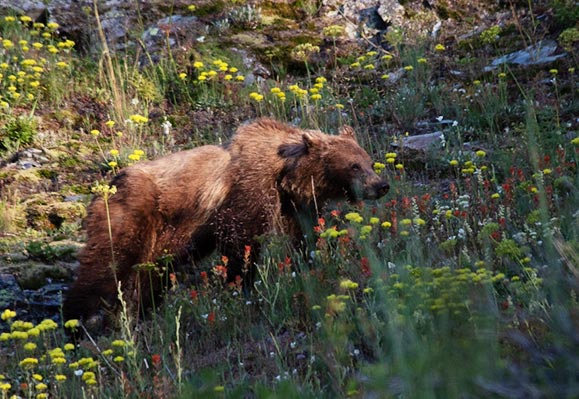Last updated: December 29, 2020
Lesson Plan
Bear Noses

- Grade Level:
- Lower Elementary: Pre-Kindergarten through Second Grade
- Subject:
- Science
- Lesson Duration:
- 60 Minutes
- Additional Standards:
- NGSS K-LS1-1. Use observations to describe patterns of what plants and animals (including humans) need to survive.
Essential Question
Why is the sense of smell important for bears?
Objective
Students will exercise their sense of smell and experience the importance of smell for survival.
Background
Both humans and animal use their sense of smell to survive. The sense of smell helps us become aware of our surroundings and can help us find food, recognize things and informs us of danger. Students will exercise their sense of smell and experience the importance of smell for survival.
The Dinseynature “Bears Educator’s Guide” for grades 2-6 has lessons and information about brown bears and their senese. This is what it says about the sense of smell of brown bears in Alaska (p.13)
“A brown bear’s hearing and vision are believed to be similar to ours. Their night vision is enhanced by a reflective lining along the back of their eyeball that bounces light back through the retina. It’s a bear’s sense of smell that really sets them apart! A bear’s sense of smell is seven times better than a bloodhound’s and 2,100 times better than ours! The secret to this super sniffing ability? A bear’s oflactory bulb (the area of the brain that manages smell) is at least five times larger than ours and their vast nasal cavity, structured like a honeycomb, is lined with millions of scent receptors. These adaptations allow a bear to sniff out food, cubs, a mate or danger up to two miles (three kilometers) away! Because of their reliance on smell, bears use scent to communicate with other bears. Cubs learn the scent of their mother and adult bears use their scent to announce their presence in an area or their interest in a mate.”
Preparation
- Fragrance stick or objects with distinct smells
- Picture of a bear
Procedure
- Have students identify a picture of a bear and the way it might use its sense of smell.
- Have students compare themselves to a bear and which ways we both use our sense of smell.
- Have students smell and object with a distinct smell.
- Have students close their eyes while you hide the object in the room or maybe even down the hall in a different room!
- Have students use their bear nose to find the object. Set up guidelines for students to search safely for the smell.
Possible Extension
- Download the free Disneynature Bears Educator’s Guide and learn more about bears.
- Borrow one of the park’s traveling trunks - the bear trunk and skulls kit can be used to look at the skulls of different animals and compare the shapes of their noses.
- Make a collage of animals that have good senses of smell.
Assessment Materials
- Was it easy for students to find the hidden object by just using their sense of smell? Which objects were most easy to find? Why?
- Could students think of objects they would like to try to hide that have a strong odor? Why would some things have more smell than others?
- What kinds of smells would a bear need to be good at finding?
